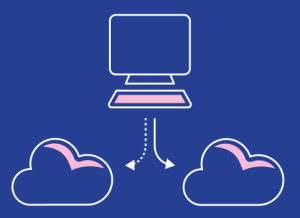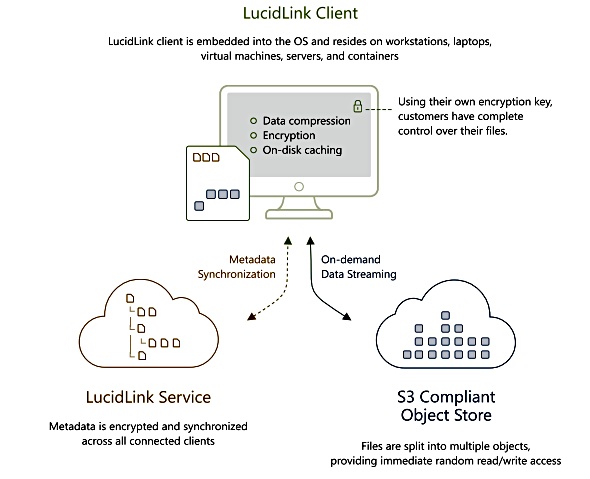
Cloud computing is a major game-changer for all industries, and particularly for the Architecture, Engineering and Construction (AEC) sector. It has allowed them to load and mobilise large amounts of data, drawing and construction documentation across regions, offices, and scale without having to invest in costly physical infrastructure.
However, cloud storage and accessibility costs can spiral out of control, especially within file sharing and transfer sectors that include heavyweight files such as AutoCAD, AutoDesk or SolidWorks.
With our expertise in the AEC sector, we sometimes have calls from customers struggling to store and secure their CAD files that can weigh up to 1.5GB per file alone. Thousands of these files need to be stored, secured, and transferred across regions, applications and cloud platforms – therefore cost can blow out quickly.
Surprise cloud bills are not unknown to CTO’s or IT decision makers in the AEC industry. These unexpected large bills come from using more expensive compute instances, over-provisioning, not switching off unused resources and data egress fees. Data egress fees are the focus of this article.
What is Data Egress and why is it relevant to the AEC sector?
Data egress is when data leaves a network and goes to an external location. It’s the ticket-clipping payment model where cloud providers take a ‘fee’ for sharing your data inside and outside of their network. If you’re using any of the hyperscalers such as AWS, Google Cloud or Azure, you will be charged anytime you write or send data outside of your network or whenever you repatriate data back into your environment.
While most providers don’t charge to transfer data into the cloud (“ingress”), they absolutely charge when it goes out. Another charge can also be incurred with ‘data transfer fees’ which may be applied when moving data between multiple regions.
Data egress or transfer fees are often hidden from forecasting and are often billed in arrears which means companies all over, including the AEC sector, unknowingly rack up thousands of dollars of bills per month – ergo, bill shock. It can be very challenging for a small IT team of a large AEC company to monitor this expenditure, especially when the delivery of physical projects and construction relies on data transfer of large AutoCAD or design files.
With some of these files ranging up to 1.5GB and needing to go across multiple architecture, engineering, and construction suppliers throughout a standard build, it’s not surprising that data egress charges are slowly becoming one of the toughest budgetary challenges an AEC CIO or CTO can face.
Solution to reduce data egress charges
As we noticed this recurring problem for our customers, we went on the hunt to find a solution that allows the seamless and secure transfer of these large files across multiple AEC suppliers, who may all be tied to one project or joint venture. In this search, we came across innovative technology from LucidLink that allows architecture, engineering, and construction to:
- Have mobility to work from anywhere with a client device-based caching solution – meaning engineers and designers can access files on remote sites, through personal devices or in real-time from office-to-building site.
- Get immediate access to large design files from any location whether they be AutoCAD, Revit or SolidWorks, for example.
- Eliminate download and upload wait times to seconds as opposed to hours compared to current solutions found in Dropbox, Google Drive or Sharepoint.
- Manage version control with real time updates of file changes.
- Collaborate in real time from across the globe and in remote sites such as the WA or QLD mining sector or regional land developments.
- Work on any major operating systems, macOS, Windows and Linux without trouble.
- Access documentation on phones, laptops, or tablets.
- Ensure all documentation is always encrypted and stored securely; and most importantly.
- Utilise infinitely scalable cloud storage without huge cloud computing costs.
This last point is a very important development and specific to AWS workloads. Through Empyrean, customers can store and stream their data using LucidLink’s Filespaces platform to bundle their AWS S3 storage. In this model, customers of Empyrean can access a LucidLink filespaces subscription that has an almost 50% reduction of data egress fees cost compared to going through AWS directly. This also helps Empyrean customers to forecast cloud services more accurately and efficiently because data egress fees are controlled, visible, notifiable – and reduced.
Example diagram:

Architectural, Engineering, Design and Construction collaboration and data management as well as the management of plans, specifications, and drawings, can be a big headache for designers, IT teams and capital project owners with frequent and simultaneous projects. Providing access and presenting these documents to users in geographically disparate locations, external suppliers, or joint venture partners is a must, as well as the requirement to control versioning.


